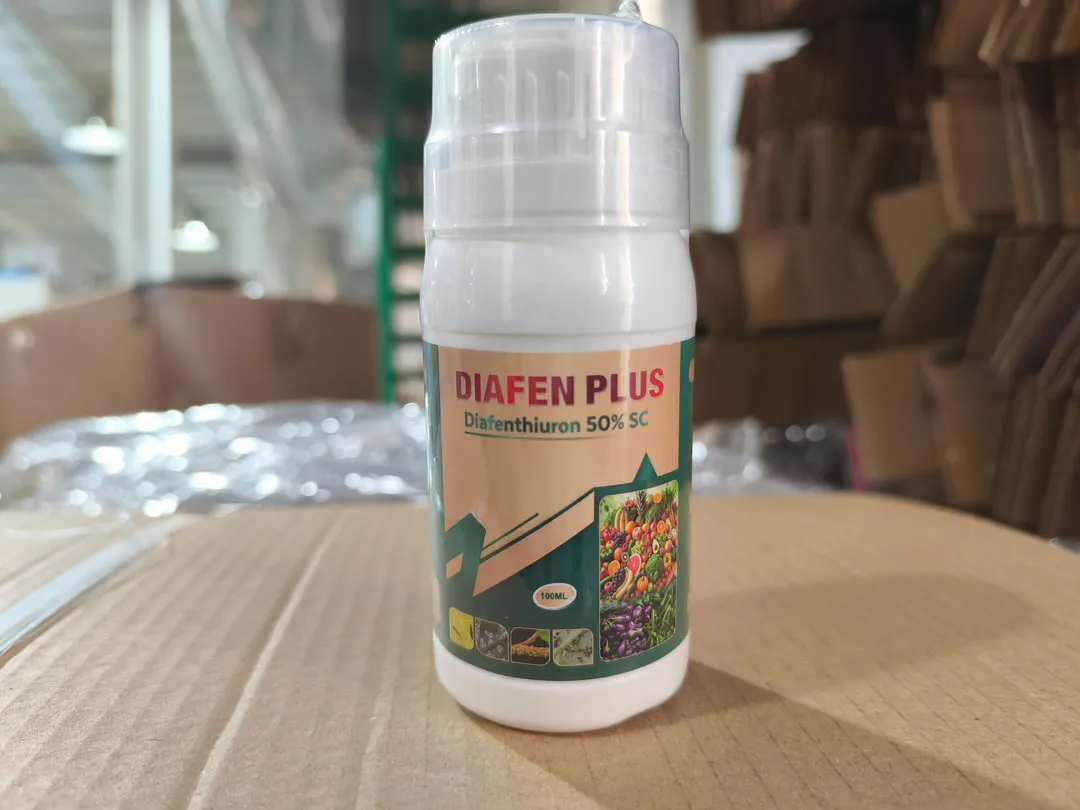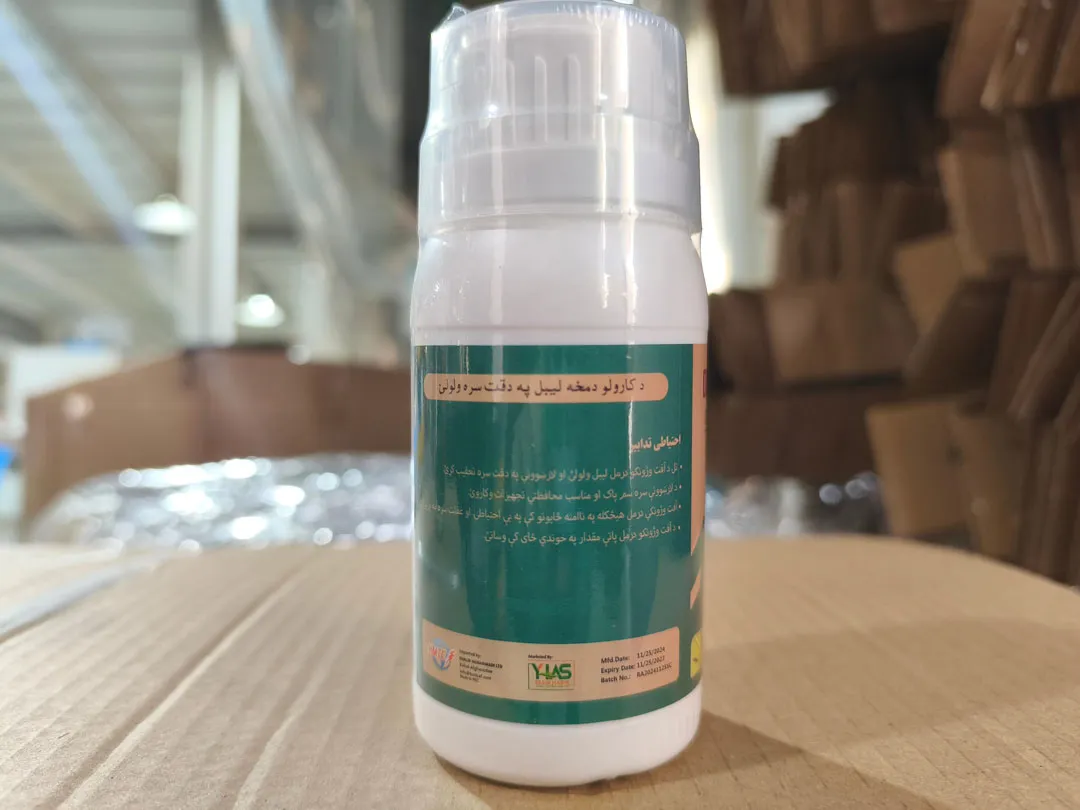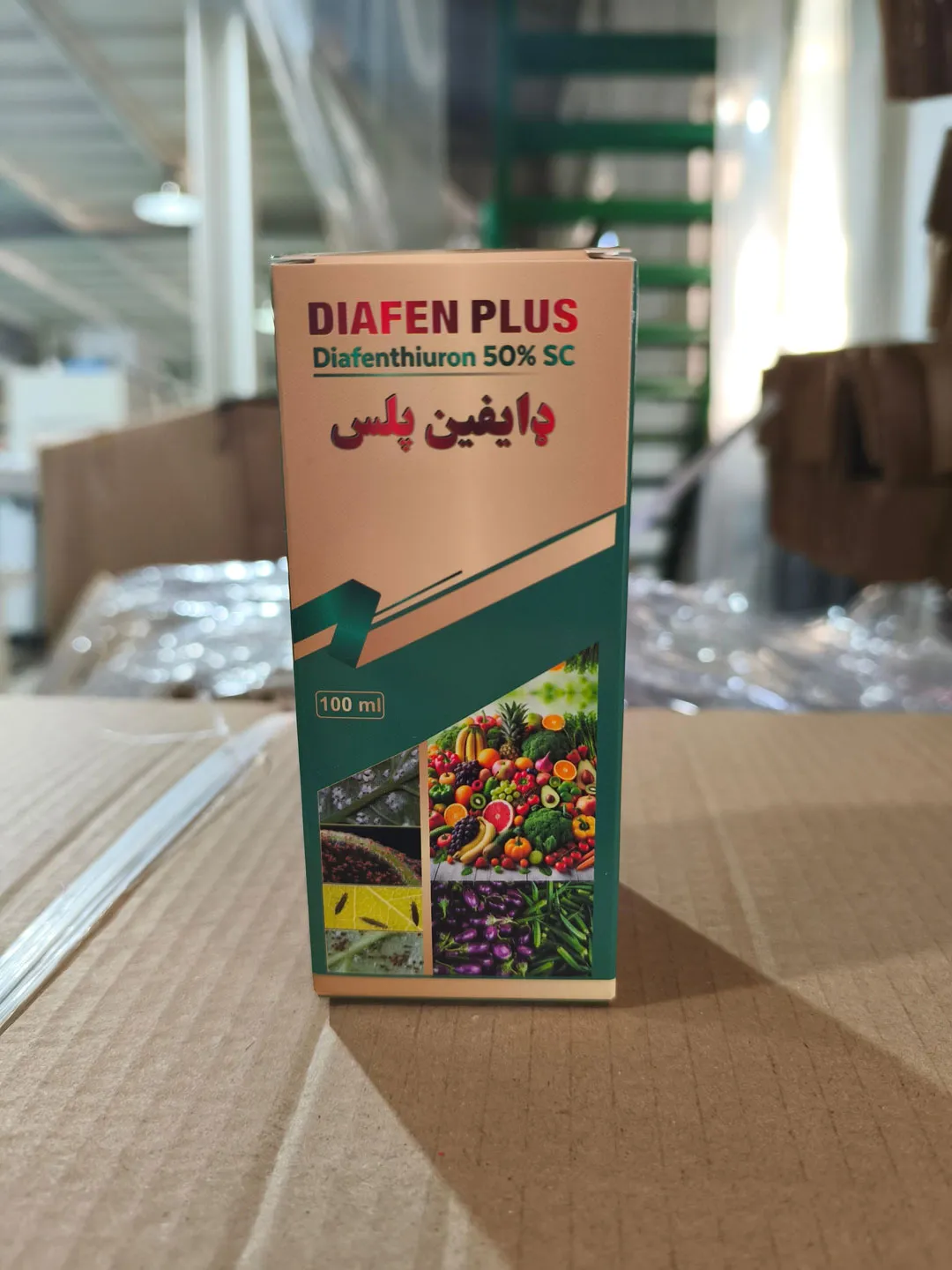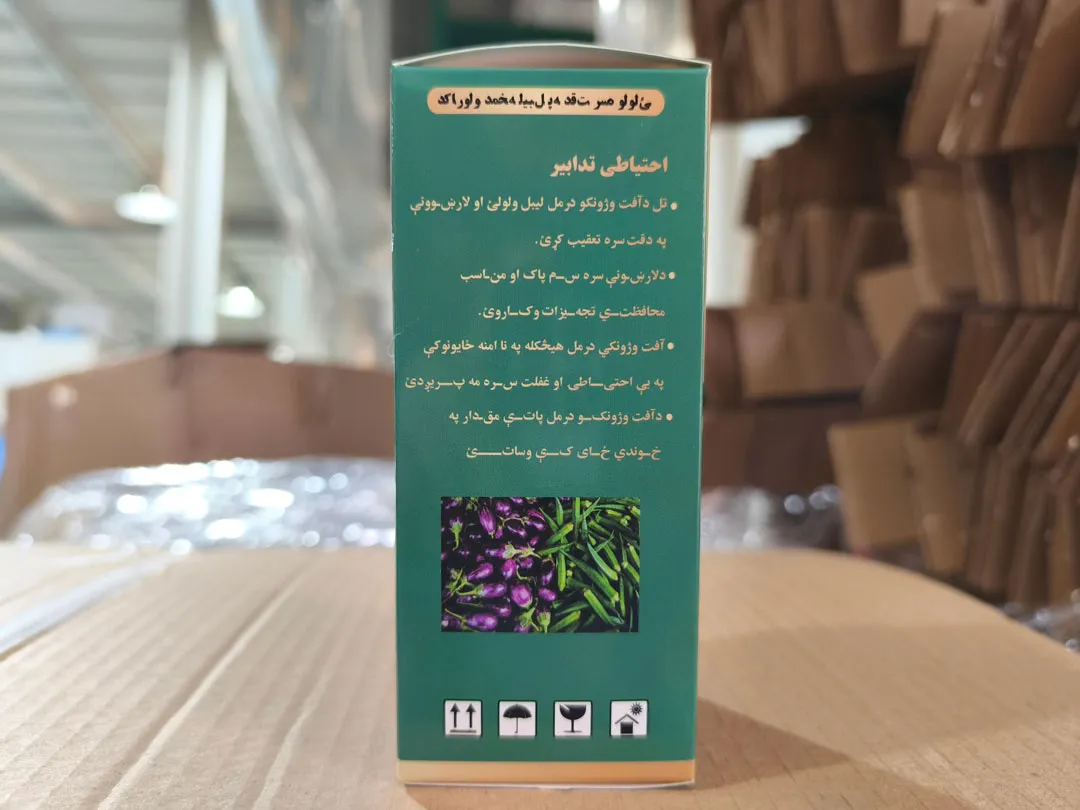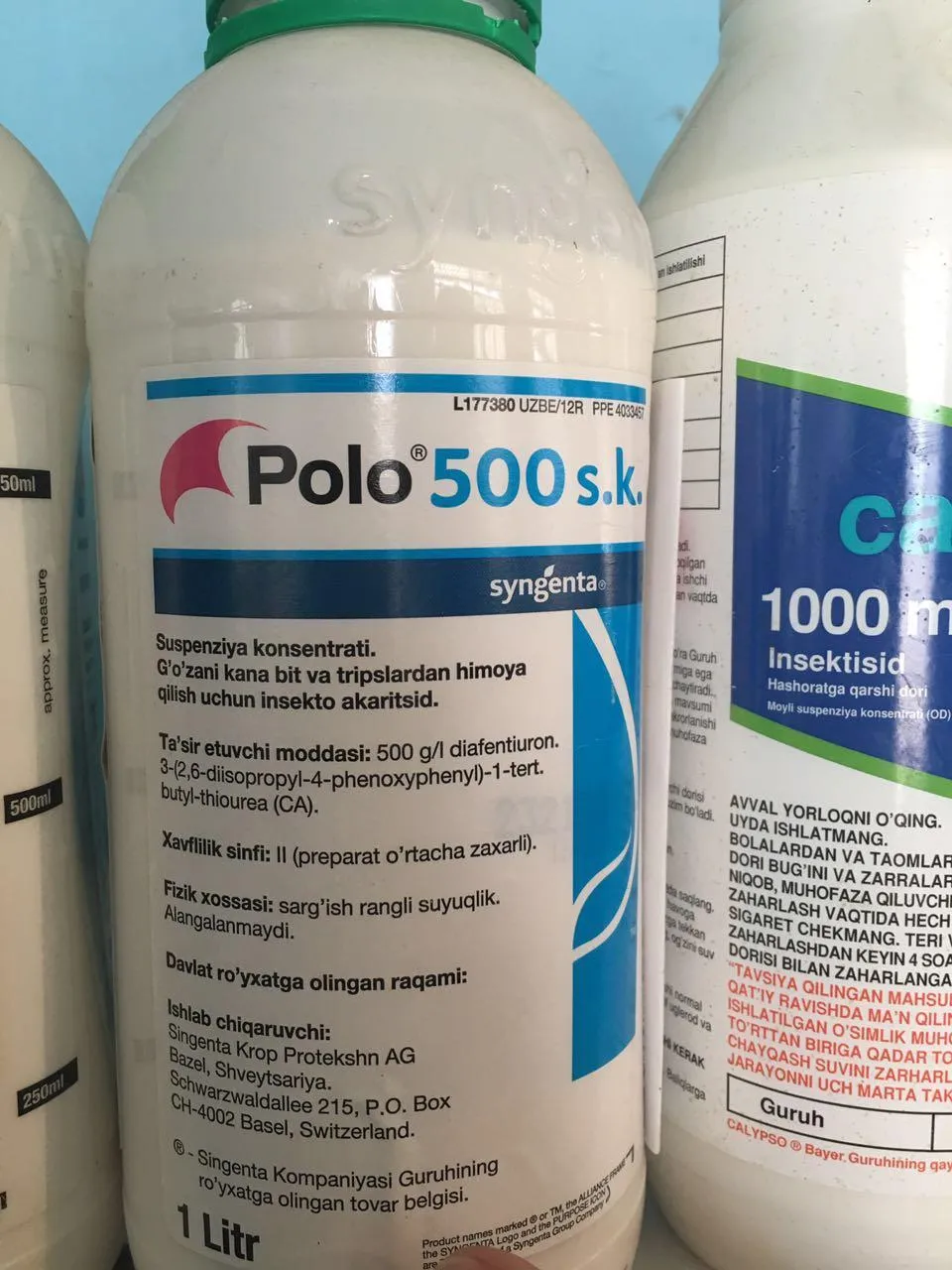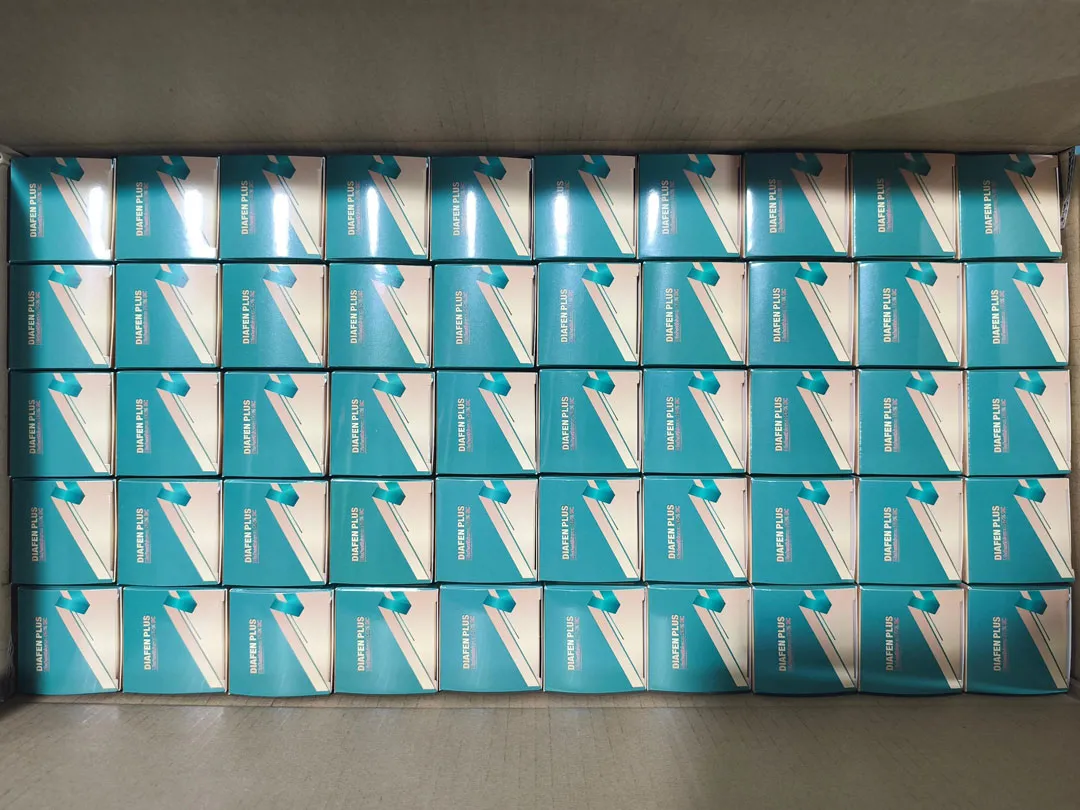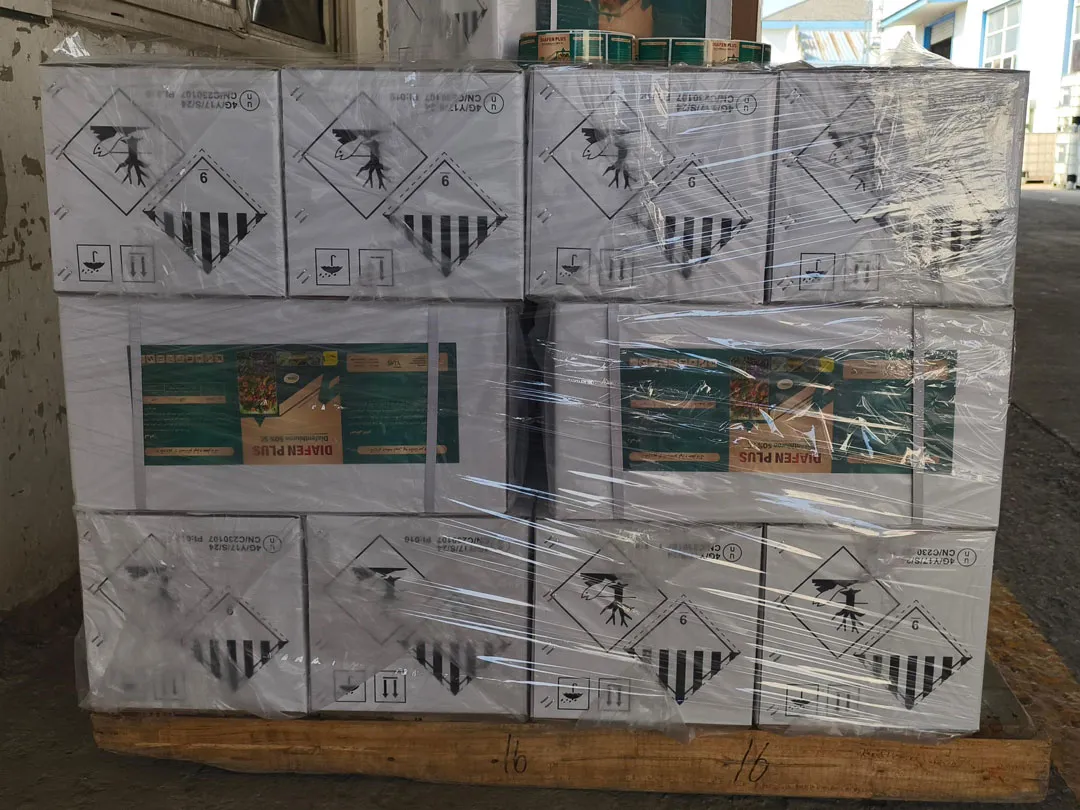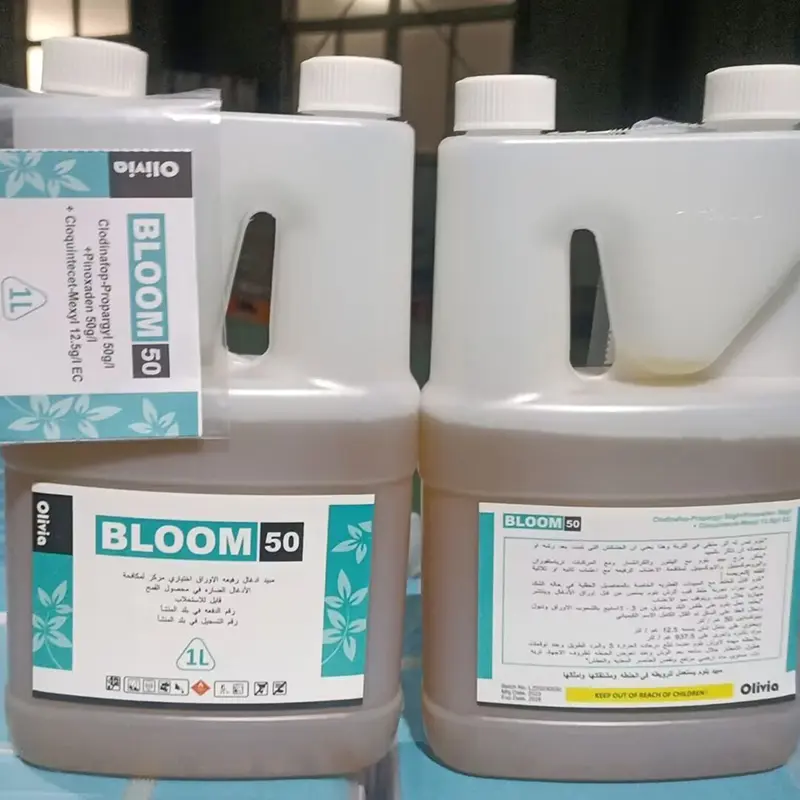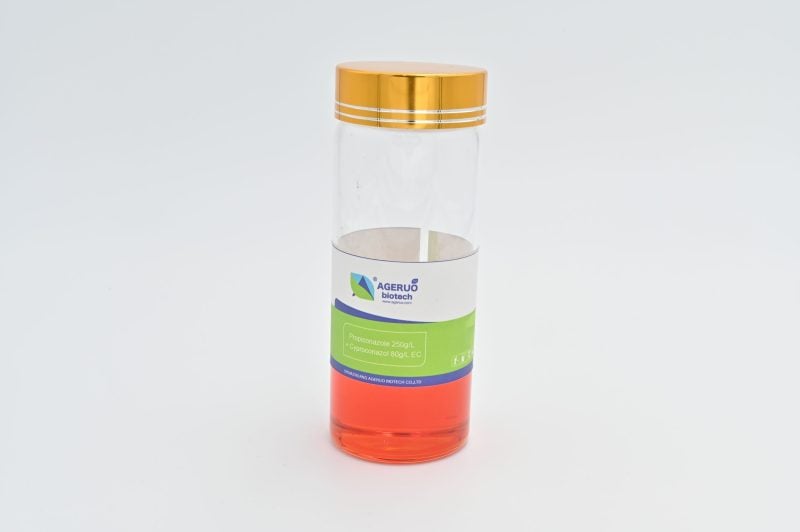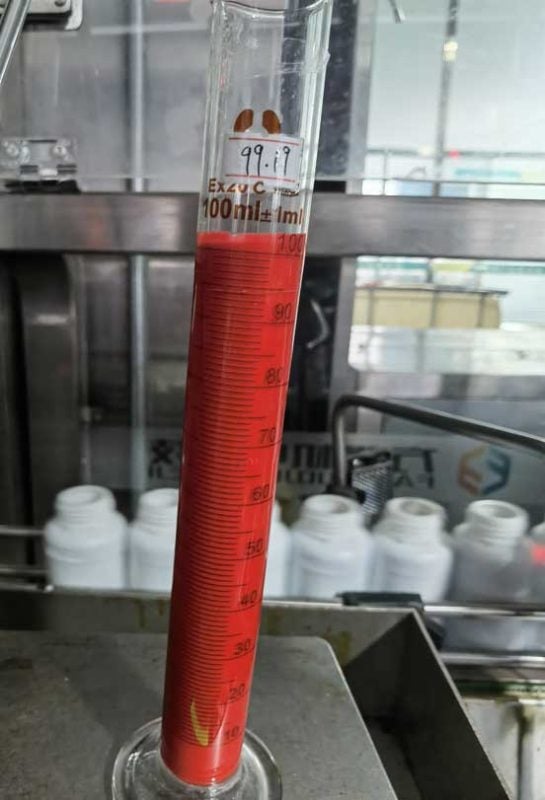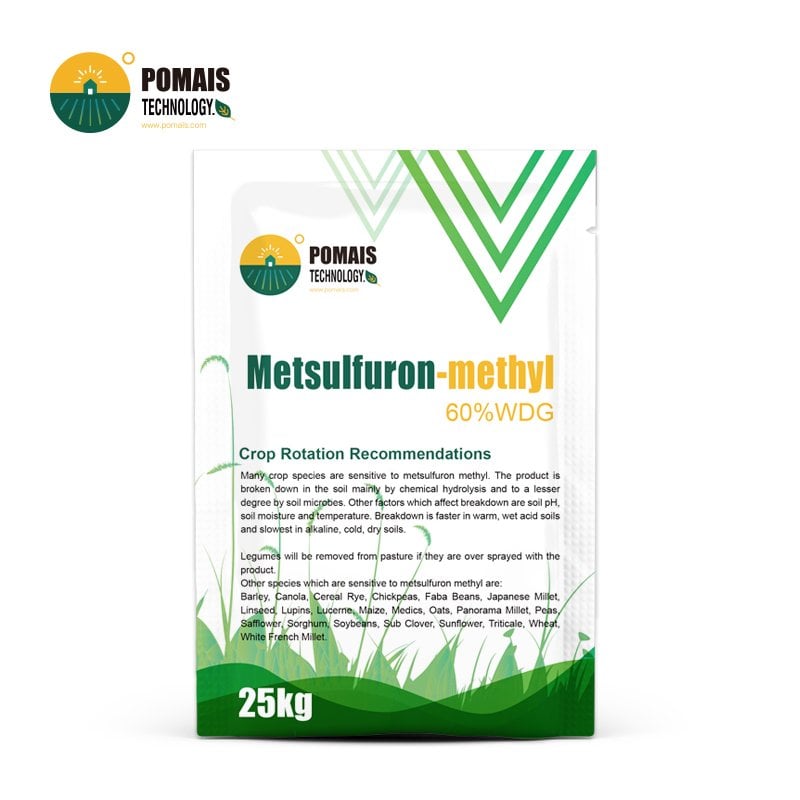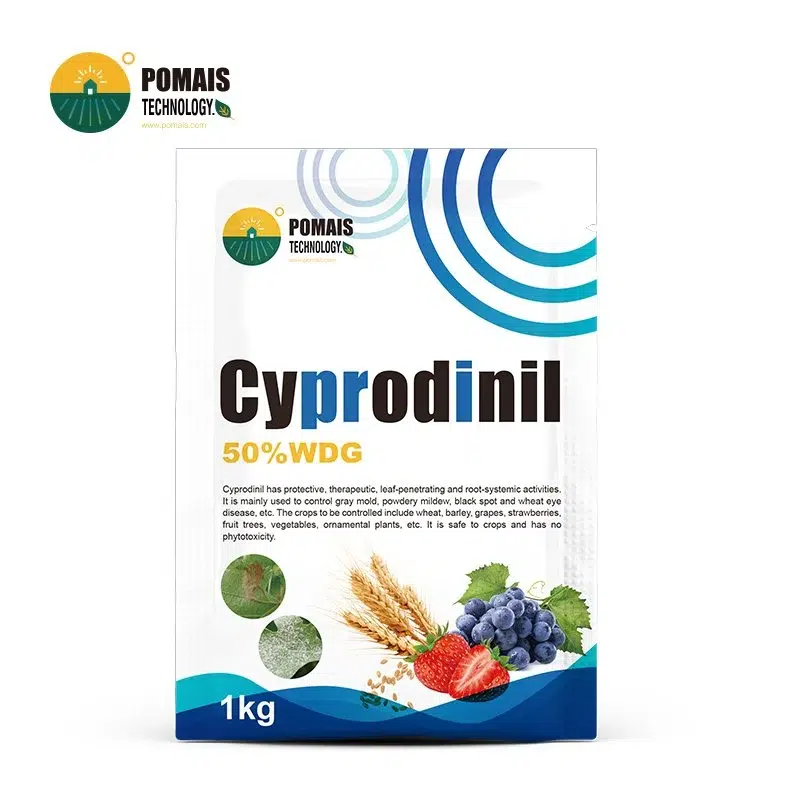Diafenthiuron 250g/L SC Insecticide
Broad-Spectrum Control for Resistant Pests
Diafenthiuron 250g/L SC is a high-efficiency suspension concentrate insecticide developed for commercial agriculture and large-scale crop protection. It offers both contact and stomach action against a wide spectrum of piercing-sucking pests. Designed to meet the performance needs of agrochemical distributors and pest control professionals, this product delivers reliable results even in areas with resistant pest populations.
As a leading diafenthiuron insecticide, this formulation is engineered to control whiteflies, aphids, mites, jassids, and thrips in key crops such as cotton, tomato, brinjal, chili, okra, and ornamental plants.
Key Features:
- Active Ingredient: Diafenthiuron
- Formulation: 250 g/L Suspension Concentrate (SC)
- Mode of Action: Inhibits mitochondrial respiration, leading to pest paralysis and death
- Target Pests: Aphididae, Whiteflies, Mites, Leafhoppers, and Thrips
- Application Crops: Cotton, vegetables, and ornamental plants
- Custom Packaging: Available in 100mL, 250mL, 500mL, 1L bottles or OEM bulk options
Whether you’re looking for a diafenthiuron 50 WP alternative, or sourcing from a trusted diafenthiuron 50 WP manufacturer, our 250g/L SC formulation provides enhanced solubility, faster knockdown, and easier tank mixing—making it ideal for modern integrated pest management (IPM) programs.
- Designed for Professional Buyers & Bulk Orders
- This product is available for business purchase and large-scale distribution.
- We support custom packaging, labeling, and formulation to meet your market needs.
- Let’s build your brand together.

About Diafenthiuron 250g/L SC Insecticide
About Diafenthiuron 250g/L SC Insecticide
| Product Name | Diafenthiuron 250g/L SC |
| Formulation | Suspension Concentrate (SC) |
| Active Ingredient | Diafenthiuron |
| Concentration | 250g/L |
| Mode of Action | Mitochondrial electron transport inhibitor (Complex II), translaminar action |
| Target Pests | Whiteflies, Aphids, Thrips, Leafhoppers, Spider Mites |
| Application Method | Foliar Spray |
| Dosage | 400–800 mL/ha depending on crop and pest pressure |
| Spray Volume | 200–400 L water/ha |
| Re-entry Interval (REI) | 12 hours |
| Pre-harvest Interval (PHI) | 7–14 days |
| Formulation Features | Stable, low foaming, UV-resistant, easy agitation |
| Packaging Options | 100mL, 250mL, 500mL, 1L, 5L, 20L; Custom OEM labeling available |
| Tank Mix Compatibility | Compatible with most insecticides, avoid alkaline products |
| Safety Precautions | Use PPE; avoid water bodies; not for windy or rainy days |
| Regulatory Compliance | FAO/WHO, ISO 9001:2015, MSDS, COA, GHS compliant |
| Environmental Behavior | Low leaching, UV degradation, toxic to aquatic life |
| OEM Services | Private label, multilingual packaging, anti-counterfeit options |
| Market Support | Field trials, registration documents, small MOQ, 99% on-time delivery |
Diafenthiuron 250g/L SC Insecticide
Diafenthiuron 250g/L SC is a next-generation insecticide formulated to meet the increasing demand for efficient pest resistance management in intensive farming systems. As a non-systemic insecticide, it works through both contact and ingestion, making it highly effective against stubborn pest populations that have developed resistance to conventional products.
This diafenthiuron insecticide offers long-lasting residual activity, maintaining control over target pests even under fluctuating environmental conditions. Its selective action is particularly suitable for integrated pest management (IPM) programs, ensuring minimal disruption to beneficial insects while delivering maximum efficacy against economic pests.
With its advanced suspension concentrate formulation, Diafenthiuron 250g/L SC offers:
- Excellent field stability across a range of climates
- Uniform droplet dispersion for optimal leaf coverage
- Reduced phytotoxic risk on sensitive crops
This product is an ideal fit for agrochemical brands, distributors, and diafenthiuron 50 WP buyers seeking an improved formulation with broader applicability. It aligns with modern crop protection goals: precision, performance, and profitability.
Mode of Action
Diafenthiuron functions as a mitochondrial electron transport inhibitor—specifically targeting Complex II within the pest’s respiratory chain. Upon contact or ingestion, it disrupts ATP synthesis, causing gradual paralysis followed by death. Unlike fast-knockdown neurotoxins, this diafenthiuron insecticide exhibits a delayed but sustained action, ensuring longer residual control without frequent reapplication.
The insecticide is non-systemic yet shows strong translaminar movement, meaning it penetrates leaf tissues and provides protection on both sides of the leaf surface. This makes Diafenthiuron particularly effective against pests that hide on the underside of leaves, such as whiteflies, leafhoppers, and mites.
Additionally, Diafenthiuron has a unique mode of action not shared with common organophosphates or pyrethroids, making it an ideal resistance management tool. Its broad-spectrum efficacy across multiple pest species allows it to be a reliable solution for high-pressure infestation scenarios.
This advanced biochemical mechanism aligns Diafenthiuron 250g/L SC with the needs of professional users seeking modern solutions to persistent pest outbreaks—especially those unsolved by traditional diafenthiuron 50 WP insecticides or generic agrochemicals.
Target Pests & Application Areas
Diafenthiuron 250g/L SC is engineered to provide broad-spectrum control against piercing-sucking and chewing pests, making it an essential tool for diverse agricultural systems. It effectively targets:
- Whiteflies (Bemisia tabaci, Trialeurodes vaporariorum)
- Aphids (Aphis gossypii, Myzus persicae)
- Thrips (Thrips tabaci, Frankliniella occidentalis)
- Leafhoppers and planthoppers
- Red spider mites and other tetranychid mites
This diafenthiuron insecticide is particularly suited for use in high-value crops where pest pressure is intense and resistance to older chemistries is common. Recommended application areas include:
- Cotton fields – for aphid, thrip, and jassid control
- Vegetable crops – including chili, eggplant, okra, and cucurbits
- Ornamentals and floriculture
- Tea plantations and tobacco farms
- Soybean and pulses
As part of your agro chemical portfolio, Diafenthiuron 250g/L SC enhances pest management programs while protecting the economic return of each crop. Its residual action ensures long-lasting protection, reducing the need for frequent spray cycles and supporting sustainable crop health.
Application Methods & Dosage
Diafenthiuron 250g/L SC is designed for foliar spray applications, delivering high contact and ingestion efficacy across multiple pest species. Its flexible application allows it to be integrated into various crop protection schedules, especially in regions where resistance to traditional insecticides has emerged.
Recommended Application Guidelines:
| Crop | Target Pest | Recommended Dosage | Application Timing |
|---|---|---|---|
| Cotton | Whiteflies, Aphids | 500–750 mL/ha | At early pest infestation stage |
| Vegetables (Chili, Eggplant, etc.) | Thrips, Whiteflies | 500–600 mL/ha | During vegetative to fruiting stage |
| Tea | Red Spider Mites | 600–800 mL/ha | At initial sign of pest appearance |
| Ornamentals | Aphids, Mites | 400–600 mL/ha | Preventive or early curative spray |
- Dilution: Mix Diafenthiuron 250g/L SC with 200–400 L of water per hectare depending on crop canopy.
- Spray Method: Use high-volume sprayers to ensure uniform coverage, especially on the undersides of leaves where pests reside.
- Re-entry Interval (REI): Minimum 12 hours
- Pre-harvest Interval (PHI): Typically 7–14 days (crop-dependent)
This diafenthiuron insecticide is compatible with standard agricultural spraying equipment and should be applied when pest populations are low to moderate for best results. Avoid spraying under high wind or rain conditions to reduce drift and maximize leaf adhesion.
Formulation Stability & Packaging Options
Diafenthiuron 250g/L SC is a stable suspension concentrate formulation developed for consistent performance under diverse climatic conditions. Its formulation ensures easy dilution, even particle dispersion, and long-lasting pest control effect across a wide range of crops.
Formulation Features:
- High Physical Stability: No phase separation or sedimentation under standard storage conditions (0–40°C)
- UV & Hydrolytic Resistance: Maintains efficacy under sunlight exposure and high humidity
- Low Foaming: Reduces nozzle clogging and enhances sprayer compatibility
- Easy Agitation: Quickly resuspends with minimal shaking, even after prolonged storage
This agrochemical diafenthiuron formulation is manufactured with strict quality control protocols to ensure consistent batch-to-batch performance and safety.
Available Packaging Options:
To meet diverse market and application needs, we provide multiple insecticide packaging options:
- Small Volume Packs: 100mL, 250mL – suitable for sample distribution or retail channels
- Standard Volume Packs: 500mL, 1L – ideal for mid-sized farms and distributors
- Bulk Volume Packs: 5L, 20L – for industrial use or large-scale application
All packaging is leak-proof, chemical-resistant, and labeled in accordance with your custom branding and regulatory requirements. OEM private label services are fully supported.
Tank Mix Compatibility & Safety Precautions
Diafenthiuron 250g/L SC exhibits good tank mix compatibility with most commonly used insecticides, miticides, and fungicides, making it a flexible component in integrated pest management (IPM) programs. This allows users to enhance spectrum control or reduce application rounds without compromising efficacy.
Tank Mixing Guidelines:
- Compatible with most organophosphates, pyrethroids, and acaricides
- Avoid mixing with alkaline substances or strongly oxidizing agents, which may degrade the active ingredient
- Always conduct a jar test before large-scale mixing to confirm physical and chemical compatibility
- Maintain constant agitation during mixing and spraying for uniform distribution
By incorporating diafenthiuron insecticide into a broader pest control strategy, users can achieve synergistic results, especially in crops facing mixed pest populations.
Safety Precautions:
- Toxic to aquatic organisms – avoid spraying near water bodies, ditches, or drainage systems
- Use appropriate PPE (gloves, respirator, protective clothing) when handling or spraying
- Avoid contact with skin, eyes, and inhalation of vapors
- Do not apply when wind speed exceeds 15 km/h to prevent drift
- Observe a pre-harvest interval (PHI) of at least 7–14 days depending on the crop
Proper handling and adherence to safety protocols are essential to maximize performance and minimize risk during the use of diafenthiuron 250g/l SC insecticide.
Regulatory Compliance & Environmental Behavior
Diafenthiuron 250g/L SC is manufactured in strict compliance with global agrochemical standards, ensuring both product quality and environmental safety throughout its lifecycle. It aligns with the core regulatory requirements for insecticide registration and safe use across multiple agricultural markets.
International Standards & Certifications:
- Conforms to FAO/WHO specifications for technical and formulated products
- Complies with GHS classification and labeling for chemical safety
- Available with complete MSDS, COA, TDS, and ICP-AES quality test reports upon request
- Manufactured under ISO 9001:2015-certified facilities to ensure consistent product integrity
Environmental Profile:
Diafenthiuron demonstrates a favorable environmental behavior under recommended usage conditions:
- Moderately persistent in soil with low leaching potential
- Exhibits low vapor pressure, reducing risk of off-target drift
- Rapid photodegradation on leaf surfaces minimizes long-term residue
- Safe for non-target terrestrial organisms when used as directed, though highly toxic to aquatic life, hence buffer zones must be observed
- Does not bioaccumulate or persist in groundwater when applied according to label
By selecting diafenthiuron insecticide, you benefit from a solution that meets modern expectations for efficacy, traceability, and ecological safety, enabling responsible pest control aligned with sustainable farming objectives.
OEM Services & Market Support
As a leading diafenthiuron 250g/L SC manufacturer, POMAIS provides comprehensive OEM and market support services tailored for agrochemical importers, distributors, and brand owners worldwide. Our production capabilities and flexible service model help you accelerate market entry and build a competitive portfolio under your own label.
OEM Formulation & Branding Services:
- Custom formulation flexibility: Diafenthiuron available in SC and WP (e.g., diafenthiuron 50 WP) formats
- Private label packaging: From bulk drums to retail-ready bottles (100mL, 250mL, 500mL, 1L, 5L)
- Multi-language labeling support: Arabic, Spanish, Russian, French, and local regulatory label adaptation
- Anti-counterfeit labeling, QR coding, and custom shrink-wrapping available upon request
Technical & Registration Assistance:
- Dossier support: Full data package (MSDS, COA, TDS, product specification sheets)
- Field trial summaries and performance data for registration in target countries
- Dedicated team for ICAMA-related export compliance and formulation certificate issuance
Global Supply Support:
- Low MOQ for startup brands, with scalable supply for larger distributors
- On-time delivery rate over 99% through established logistics partners in Africa, the Middle East, Central Asia, and Latin America
- Ongoing product optimization based on market resistance trends and feedback
POMAIS is more than a supplier—we are your strategic manufacturing partner, offering high-efficiency diafenthiuron insecticide solutions with professional support from factory floor to field application.
Field Use Scenarios
Diafenthiuron 250g/L SC is widely adopted in commercial crop protection programs due to its dual-action (contact + systemic) properties and sustained efficacy against resistant pests. Its value is most evident in the following field applications:
Cotton Fields – Whitefly and Aphid Pressure
In cotton-growing regions facing intense Bemisia tabaci and Aphis gossypii infestations, Diafenthiuron 250g/L SC offers long-lasting suppression. Applied during early flowering to mid-boll formation stages, it provides up to 10–14 days of effective control with minimal crop phytotoxicity.
Vegetable Crops – Thrips and Leafhopper Management
For solanaceous vegetables (eggplants, tomatoes) and cucurbits, Diafenthiuron insecticide is used to manage Thrips tabaci and leafhoppers before flowering. Field trials demonstrate quick knockdown and strong residual activity, especially when alternated with different MoA products for resistance management.
Rice Ecosystems – Planthopper Control in High-Humidity Zones
In flooded rice paddies of Southeast Asia and Sub-Saharan Africa, Diafenthiuron is utilized for controlling brown planthopper (Nilaparvata lugens) outbreaks during the panicle initiation to booting stages. The formulation’s systemic behavior ensures absorption through the plant’s vascular system, disrupting pest feeding behavior and reducing virus transmission risk.
Greenhouses and Ornamentals – Mite and Whitefly Suppression
In greenhouse conditions where pest resurgence is rapid, Diafenthiuron 250g/L SC serves as a rotation partner for two-spotted spider mites and greenhouse whiteflies, especially in ornamentals and nursery crops. It is favored for its low vapor pressure and non-disruptive profile on beneficial insects when used at recommended dosages.
By addressing high-value crops under real agronomic pressure, Diafenthiuron supports integrated pest management (IPM) strategies where both efficacy and crop safety are critical. Your clients will appreciate its broad-spectrum control and economic efficiency across varied climatic zones.
FAQ – Common Questions
Q1: What pests does Diafenthiuron 250g/L SC control effectively?
Diafenthiuron is highly effective against sucking pests such as whiteflies, aphids, jassids, leafhoppers, thrips, and mites. It is particularly suited for crops like cotton, rice, vegetables, and ornamentals.
Q2: Can Diafenthiuron 250g/L SC be mixed with other pesticides?
Yes, it is compatible with most insecticides and fungicides that are neutral or slightly acidic in nature. However, it is not recommended to mix with strongly alkaline products. Always perform a small-scale compatibility test before large-scale tank mixing.
Q3: What is the typical application dose per hectare?
Recommended dosage varies by crop and pest pressure, but for most field applications, it ranges from 400–500 mL per hectare. Refer to local agricultural extension guidelines for optimal timing and frequency.
Q4: How long does Diafenthiuron remain effective after application?
The insecticide provides residual control for 7 to 14 days depending on weather conditions and pest population. Its systemic uptake enhances persistence in crops like rice and cotton.
Q5: Is Diafenthiuron safe for beneficial insects and the environment?
When used as directed, Diafenthiuron exhibits selective toxicity and minimal impact on beneficial insect populations. It degrades relatively quickly in sunlight, reducing long-term environmental residues.
Q6: Do you offer Diafenthiuron 50 WP or other formulations?
Yes, we also supply Diafenthiuron 50 WP and offer custom formulation services depending on regional registration needs and customer demand. Bulk and branded OEM packaging are available.
Q7: What kind of packaging and labeling services do you provide?
We offer a range of packaging options from 100 mL to 1 L bottles, with customizable labels in multiple languages. Both POMAIS-branded and private-label solutions are supported.
Q8: Is registration support available for new markets?
Yes, we provide full regulatory documentation, including MSDS, COA, TDS, and sample analysis support, to help clients register Diafenthiuron in their local markets.
Why Choose POMAIS & Partner with Us
Choosing the right diafenthiuron insecticide supplier is crucial for maintaining product reliability, regulatory compliance, and competitive market pricing. At POMAIS, we offer far more than just high-quality agrochemicals—we deliver a full-service partnership designed to scale with your business.
1. Proven Manufacturer of Diafenthiuron 250g/L SC and 50 WP
With advanced production facilities and over a decade of experience in formulating diafenthiuron-based insecticides, we ensure consistency in active ingredient quality, formulation performance, and shelf stability. Our production lines are ISO-certified and follow GMP standards.
2. Flexible OEM & Private Label Services
From multilingual label printing to custom packaging design, POMAIS empowers importers, distributors, and brand owners to launch their own diafenthiuron products under localized branding. We offer small batch flexibility and scalable volume for growing markets.
3. Full Regulatory & Documentation Support
We assist with global pesticide registrations by providing comprehensive data sheets including MSDS, COA, TDS, and sample analysis reports. Whether you’re targeting Asia, Africa, Latin America, or the Middle East, our export team ensures fast and compliant documentation handling.
4. Responsive Supply Chain & Timely Delivery
Our logistics partnerships across key export corridors—Africa, the Middle East, and Central Asia—allow us to meet delivery schedules with >99% on-time performance. We offer CIF, FOB, and DDP terms based on client preferences.
5. Technical Guidance & After-Sales Support
Beyond supplying diafenthiuron 250g/L SC, we provide application guidance, tank mix advice, and product training for your field teams. Our team of agronomists and technical specialists is on hand to answer any questions from the ground.
Partner with POMAIS today to secure a reliable diafenthiuron supply solution tailored to your market needs. Whether you’re launching a new brand or expanding your current portfolio, we’re here to help you grow with confidence.
| Product Name | Diafenthiuron 250g/L SC |
| Formulation | Suspension Concentrate (SC) |
| Active Ingredient | Diafenthiuron |
| Concentration | 250g/L |
| Mode of Action | Mitochondrial electron transport inhibitor (Complex II), translaminar action |
| Target Pests | Whiteflies, Aphids, Thrips, Leafhoppers, Spider Mites |
| Application Method | Foliar Spray |
| Dosage | 400–800 mL/ha depending on crop and pest pressure |
| Spray Volume | 200–400 L water/ha |
| Re-entry Interval (REI) | 12 hours |
| Pre-harvest Interval (PHI) | 7–14 days |
| Formulation Features | Stable, low foaming, UV-resistant, easy agitation |
| Packaging Options | 100mL, 250mL, 500mL, 1L, 5L, 20L; Custom OEM labeling available |
| Tank Mix Compatibility | Compatible with most insecticides, avoid alkaline products |
| Safety Precautions | Use PPE; avoid water bodies; not for windy or rainy days |
| Regulatory Compliance | FAO/WHO, ISO 9001:2015, MSDS, COA, GHS compliant |
| Environmental Behavior | Low leaching, UV degradation, toxic to aquatic life |
| OEM Services | Private label, multilingual packaging, anti-counterfeit options |
| Market Support | Field trials, registration documents, small MOQ, 99% on-time delivery |
Diafenthiuron 250g/L SC Insecticide
Diafenthiuron 250g/L SC is a next-generation insecticide formulated to meet the increasing demand for efficient pest resistance management in intensive farming systems. As a non-systemic insecticide, it works through both contact and ingestion, making it highly effective against stubborn pest populations that have developed resistance to conventional products.
This diafenthiuron insecticide offers long-lasting residual activity, maintaining control over target pests even under fluctuating environmental conditions. Its selective action is particularly suitable for integrated pest management (IPM) programs, ensuring minimal disruption to beneficial insects while delivering maximum efficacy against economic pests.
With its advanced suspension concentrate formulation, Diafenthiuron 250g/L SC offers:
- Excellent field stability across a range of climates
- Uniform droplet dispersion for optimal leaf coverage
- Reduced phytotoxic risk on sensitive crops
This product is an ideal fit for agrochemical brands, distributors, and diafenthiuron 50 WP buyers seeking an improved formulation with broader applicability. It aligns with modern crop protection goals: precision, performance, and profitability.
Mode of Action
Diafenthiuron functions as a mitochondrial electron transport inhibitor—specifically targeting Complex II within the pest’s respiratory chain. Upon contact or ingestion, it disrupts ATP synthesis, causing gradual paralysis followed by death. Unlike fast-knockdown neurotoxins, this diafenthiuron insecticide exhibits a delayed but sustained action, ensuring longer residual control without frequent reapplication.
The insecticide is non-systemic yet shows strong translaminar movement, meaning it penetrates leaf tissues and provides protection on both sides of the leaf surface. This makes Diafenthiuron particularly effective against pests that hide on the underside of leaves, such as whiteflies, leafhoppers, and mites.
Additionally, Diafenthiuron has a unique mode of action not shared with common organophosphates or pyrethroids, making it an ideal resistance management tool. Its broad-spectrum efficacy across multiple pest species allows it to be a reliable solution for high-pressure infestation scenarios.
This advanced biochemical mechanism aligns Diafenthiuron 250g/L SC with the needs of professional users seeking modern solutions to persistent pest outbreaks—especially those unsolved by traditional diafenthiuron 50 WP insecticides or generic agrochemicals.
Target Pests & Application Areas
Diafenthiuron 250g/L SC is engineered to provide broad-spectrum control against piercing-sucking and chewing pests, making it an essential tool for diverse agricultural systems. It effectively targets:
- Whiteflies (Bemisia tabaci, Trialeurodes vaporariorum)
- Aphids (Aphis gossypii, Myzus persicae)
- Thrips (Thrips tabaci, Frankliniella occidentalis)
- Leafhoppers and planthoppers
- Red spider mites and other tetranychid mites
This diafenthiuron insecticide is particularly suited for use in high-value crops where pest pressure is intense and resistance to older chemistries is common. Recommended application areas include:
- Cotton fields – for aphid, thrip, and jassid control
- Vegetable crops – including chili, eggplant, okra, and cucurbits
- Ornamentals and floriculture
- Tea plantations and tobacco farms
- Soybean and pulses
As part of your agro chemical portfolio, Diafenthiuron 250g/L SC enhances pest management programs while protecting the economic return of each crop. Its residual action ensures long-lasting protection, reducing the need for frequent spray cycles and supporting sustainable crop health.
Application Methods & Dosage
Diafenthiuron 250g/L SC is designed for foliar spray applications, delivering high contact and ingestion efficacy across multiple pest species. Its flexible application allows it to be integrated into various crop protection schedules, especially in regions where resistance to traditional insecticides has emerged.
Recommended Application Guidelines:
| Crop | Target Pest | Recommended Dosage | Application Timing |
|---|---|---|---|
| Cotton | Whiteflies, Aphids | 500–750 mL/ha | At early pest infestation stage |
| Vegetables (Chili, Eggplant, etc.) | Thrips, Whiteflies | 500–600 mL/ha | During vegetative to fruiting stage |
| Tea | Red Spider Mites | 600–800 mL/ha | At initial sign of pest appearance |
| Ornamentals | Aphids, Mites | 400–600 mL/ha | Preventive or early curative spray |
- Dilution: Mix Diafenthiuron 250g/L SC with 200–400 L of water per hectare depending on crop canopy.
- Spray Method: Use high-volume sprayers to ensure uniform coverage, especially on the undersides of leaves where pests reside.
- Re-entry Interval (REI): Minimum 12 hours
- Pre-harvest Interval (PHI): Typically 7–14 days (crop-dependent)
This diafenthiuron insecticide is compatible with standard agricultural spraying equipment and should be applied when pest populations are low to moderate for best results. Avoid spraying under high wind or rain conditions to reduce drift and maximize leaf adhesion.
Formulation Stability & Packaging Options
Diafenthiuron 250g/L SC is a stable suspension concentrate formulation developed for consistent performance under diverse climatic conditions. Its formulation ensures easy dilution, even particle dispersion, and long-lasting pest control effect across a wide range of crops.
Formulation Features:
- High Physical Stability: No phase separation or sedimentation under standard storage conditions (0–40°C)
- UV & Hydrolytic Resistance: Maintains efficacy under sunlight exposure and high humidity
- Low Foaming: Reduces nozzle clogging and enhances sprayer compatibility
- Easy Agitation: Quickly resuspends with minimal shaking, even after prolonged storage
This agrochemical diafenthiuron formulation is manufactured with strict quality control protocols to ensure consistent batch-to-batch performance and safety.
Available Packaging Options:
To meet diverse market and application needs, we provide multiple insecticide packaging options:
- Small Volume Packs: 100mL, 250mL – suitable for sample distribution or retail channels
- Standard Volume Packs: 500mL, 1L – ideal for mid-sized farms and distributors
- Bulk Volume Packs: 5L, 20L – for industrial use or large-scale application
All packaging is leak-proof, chemical-resistant, and labeled in accordance with your custom branding and regulatory requirements. OEM private label services are fully supported.
Tank Mix Compatibility & Safety Precautions
Diafenthiuron 250g/L SC exhibits good tank mix compatibility with most commonly used insecticides, miticides, and fungicides, making it a flexible component in integrated pest management (IPM) programs. This allows users to enhance spectrum control or reduce application rounds without compromising efficacy.
Tank Mixing Guidelines:
- Compatible with most organophosphates, pyrethroids, and acaricides
- Avoid mixing with alkaline substances or strongly oxidizing agents, which may degrade the active ingredient
- Always conduct a jar test before large-scale mixing to confirm physical and chemical compatibility
- Maintain constant agitation during mixing and spraying for uniform distribution
By incorporating diafenthiuron insecticide into a broader pest control strategy, users can achieve synergistic results, especially in crops facing mixed pest populations.
Safety Precautions:
- Toxic to aquatic organisms – avoid spraying near water bodies, ditches, or drainage systems
- Use appropriate PPE (gloves, respirator, protective clothing) when handling or spraying
- Avoid contact with skin, eyes, and inhalation of vapors
- Do not apply when wind speed exceeds 15 km/h to prevent drift
- Observe a pre-harvest interval (PHI) of at least 7–14 days depending on the crop
Proper handling and adherence to safety protocols are essential to maximize performance and minimize risk during the use of diafenthiuron 250g/l SC insecticide.
Regulatory Compliance & Environmental Behavior
Diafenthiuron 250g/L SC is manufactured in strict compliance with global agrochemical standards, ensuring both product quality and environmental safety throughout its lifecycle. It aligns with the core regulatory requirements for insecticide registration and safe use across multiple agricultural markets.
International Standards & Certifications:
- Conforms to FAO/WHO specifications for technical and formulated products
- Complies with GHS classification and labeling for chemical safety
- Available with complete MSDS, COA, TDS, and ICP-AES quality test reports upon request
- Manufactured under ISO 9001:2015-certified facilities to ensure consistent product integrity
Environmental Profile:
Diafenthiuron demonstrates a favorable environmental behavior under recommended usage conditions:
- Moderately persistent in soil with low leaching potential
- Exhibits low vapor pressure, reducing risk of off-target drift
- Rapid photodegradation on leaf surfaces minimizes long-term residue
- Safe for non-target terrestrial organisms when used as directed, though highly toxic to aquatic life, hence buffer zones must be observed
- Does not bioaccumulate or persist in groundwater when applied according to label
By selecting diafenthiuron insecticide, you benefit from a solution that meets modern expectations for efficacy, traceability, and ecological safety, enabling responsible pest control aligned with sustainable farming objectives.
OEM Services & Market Support
As a leading diafenthiuron 250g/L SC manufacturer, POMAIS provides comprehensive OEM and market support services tailored for agrochemical importers, distributors, and brand owners worldwide. Our production capabilities and flexible service model help you accelerate market entry and build a competitive portfolio under your own label.
OEM Formulation & Branding Services:
- Custom formulation flexibility: Diafenthiuron available in SC and WP (e.g., diafenthiuron 50 WP) formats
- Private label packaging: From bulk drums to retail-ready bottles (100mL, 250mL, 500mL, 1L, 5L)
- Multi-language labeling support: Arabic, Spanish, Russian, French, and local regulatory label adaptation
- Anti-counterfeit labeling, QR coding, and custom shrink-wrapping available upon request
Technical & Registration Assistance:
- Dossier support: Full data package (MSDS, COA, TDS, product specification sheets)
- Field trial summaries and performance data for registration in target countries
- Dedicated team for ICAMA-related export compliance and formulation certificate issuance
Global Supply Support:
- Low MOQ for startup brands, with scalable supply for larger distributors
- On-time delivery rate over 99% through established logistics partners in Africa, the Middle East, Central Asia, and Latin America
- Ongoing product optimization based on market resistance trends and feedback
POMAIS is more than a supplier—we are your strategic manufacturing partner, offering high-efficiency diafenthiuron insecticide solutions with professional support from factory floor to field application.
Field Use Scenarios
Diafenthiuron 250g/L SC is widely adopted in commercial crop protection programs due to its dual-action (contact + systemic) properties and sustained efficacy against resistant pests. Its value is most evident in the following field applications:
Cotton Fields – Whitefly and Aphid Pressure
In cotton-growing regions facing intense Bemisia tabaci and Aphis gossypii infestations, Diafenthiuron 250g/L SC offers long-lasting suppression. Applied during early flowering to mid-boll formation stages, it provides up to 10–14 days of effective control with minimal crop phytotoxicity.
Vegetable Crops – Thrips and Leafhopper Management
For solanaceous vegetables (eggplants, tomatoes) and cucurbits, Diafenthiuron insecticide is used to manage Thrips tabaci and leafhoppers before flowering. Field trials demonstrate quick knockdown and strong residual activity, especially when alternated with different MoA products for resistance management.
Rice Ecosystems – Planthopper Control in High-Humidity Zones
In flooded rice paddies of Southeast Asia and Sub-Saharan Africa, Diafenthiuron is utilized for controlling brown planthopper (Nilaparvata lugens) outbreaks during the panicle initiation to booting stages. The formulation’s systemic behavior ensures absorption through the plant’s vascular system, disrupting pest feeding behavior and reducing virus transmission risk.
Greenhouses and Ornamentals – Mite and Whitefly Suppression
In greenhouse conditions where pest resurgence is rapid, Diafenthiuron 250g/L SC serves as a rotation partner for two-spotted spider mites and greenhouse whiteflies, especially in ornamentals and nursery crops. It is favored for its low vapor pressure and non-disruptive profile on beneficial insects when used at recommended dosages.
By addressing high-value crops under real agronomic pressure, Diafenthiuron supports integrated pest management (IPM) strategies where both efficacy and crop safety are critical. Your clients will appreciate its broad-spectrum control and economic efficiency across varied climatic zones.
FAQ – Common Questions
Q1: What pests does Diafenthiuron 250g/L SC control effectively?
Diafenthiuron is highly effective against sucking pests such as whiteflies, aphids, jassids, leafhoppers, thrips, and mites. It is particularly suited for crops like cotton, rice, vegetables, and ornamentals.
Q2: Can Diafenthiuron 250g/L SC be mixed with other pesticides?
Yes, it is compatible with most insecticides and fungicides that are neutral or slightly acidic in nature. However, it is not recommended to mix with strongly alkaline products. Always perform a small-scale compatibility test before large-scale tank mixing.
Q3: What is the typical application dose per hectare?
Recommended dosage varies by crop and pest pressure, but for most field applications, it ranges from 400–500 mL per hectare. Refer to local agricultural extension guidelines for optimal timing and frequency.
Q4: How long does Diafenthiuron remain effective after application?
The insecticide provides residual control for 7 to 14 days depending on weather conditions and pest population. Its systemic uptake enhances persistence in crops like rice and cotton.
Q5: Is Diafenthiuron safe for beneficial insects and the environment?
When used as directed, Diafenthiuron exhibits selective toxicity and minimal impact on beneficial insect populations. It degrades relatively quickly in sunlight, reducing long-term environmental residues.
Q6: Do you offer Diafenthiuron 50 WP or other formulations?
Yes, we also supply Diafenthiuron 50 WP and offer custom formulation services depending on regional registration needs and customer demand. Bulk and branded OEM packaging are available.
Q7: What kind of packaging and labeling services do you provide?
We offer a range of packaging options from 100 mL to 1 L bottles, with customizable labels in multiple languages. Both POMAIS-branded and private-label solutions are supported.
Q8: Is registration support available for new markets?
Yes, we provide full regulatory documentation, including MSDS, COA, TDS, and sample analysis support, to help clients register Diafenthiuron in their local markets.
Why Choose POMAIS & Partner with Us
Choosing the right diafenthiuron insecticide supplier is crucial for maintaining product reliability, regulatory compliance, and competitive market pricing. At POMAIS, we offer far more than just high-quality agrochemicals—we deliver a full-service partnership designed to scale with your business.
1. Proven Manufacturer of Diafenthiuron 250g/L SC and 50 WP
With advanced production facilities and over a decade of experience in formulating diafenthiuron-based insecticides, we ensure consistency in active ingredient quality, formulation performance, and shelf stability. Our production lines are ISO-certified and follow GMP standards.
2. Flexible OEM & Private Label Services
From multilingual label printing to custom packaging design, POMAIS empowers importers, distributors, and brand owners to launch their own diafenthiuron products under localized branding. We offer small batch flexibility and scalable volume for growing markets.
3. Full Regulatory & Documentation Support
We assist with global pesticide registrations by providing comprehensive data sheets including MSDS, COA, TDS, and sample analysis reports. Whether you’re targeting Asia, Africa, Latin America, or the Middle East, our export team ensures fast and compliant documentation handling.
4. Responsive Supply Chain & Timely Delivery
Our logistics partnerships across key export corridors—Africa, the Middle East, and Central Asia—allow us to meet delivery schedules with >99% on-time performance. We offer CIF, FOB, and DDP terms based on client preferences.
5. Technical Guidance & After-Sales Support
Beyond supplying diafenthiuron 250g/L SC, we provide application guidance, tank mix advice, and product training for your field teams. Our team of agronomists and technical specialists is on hand to answer any questions from the ground.
Partner with POMAIS today to secure a reliable diafenthiuron supply solution tailored to your market needs. Whether you’re launching a new brand or expanding your current portfolio, we’re here to help you grow with confidence.
Related Products
Latest News

